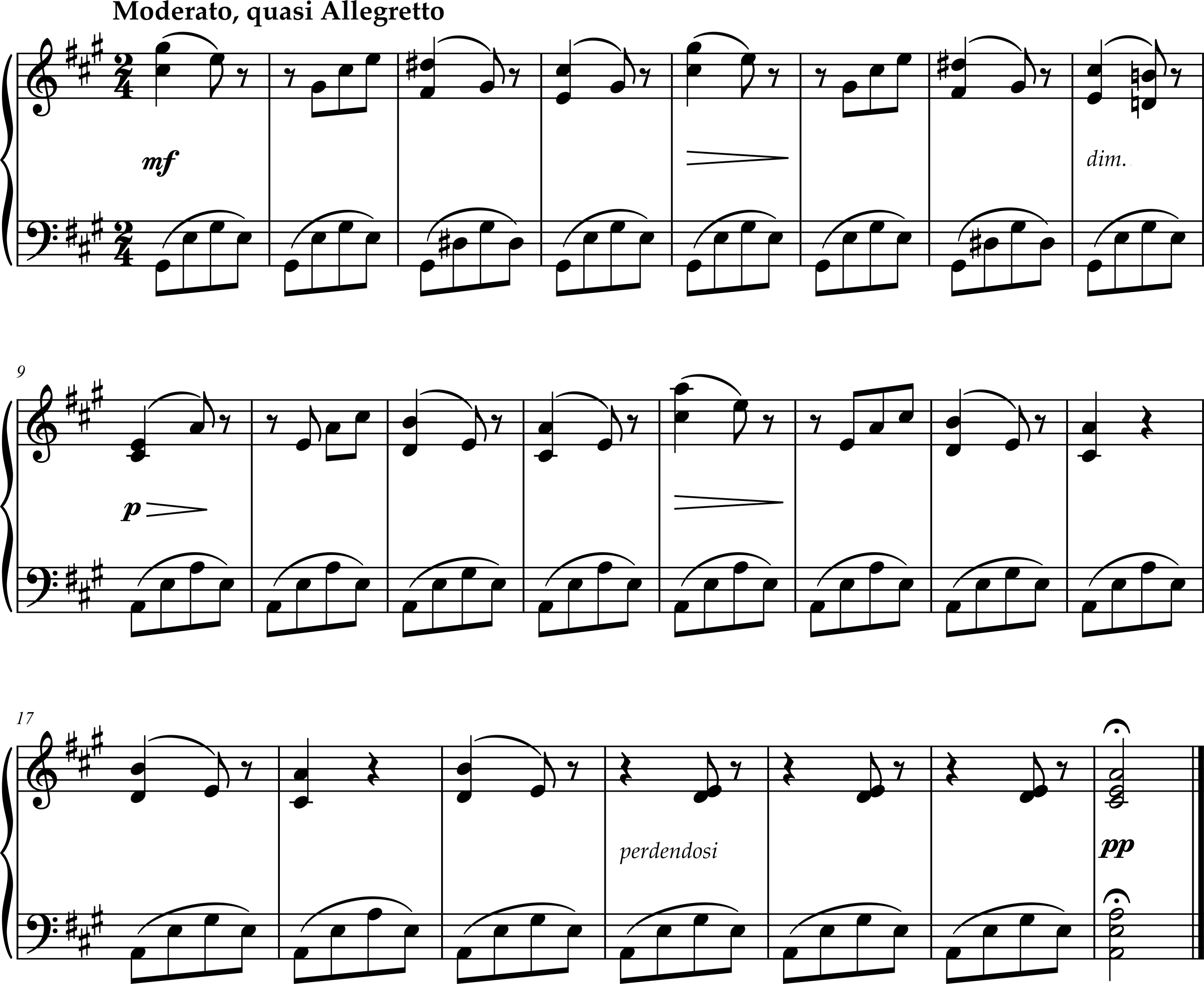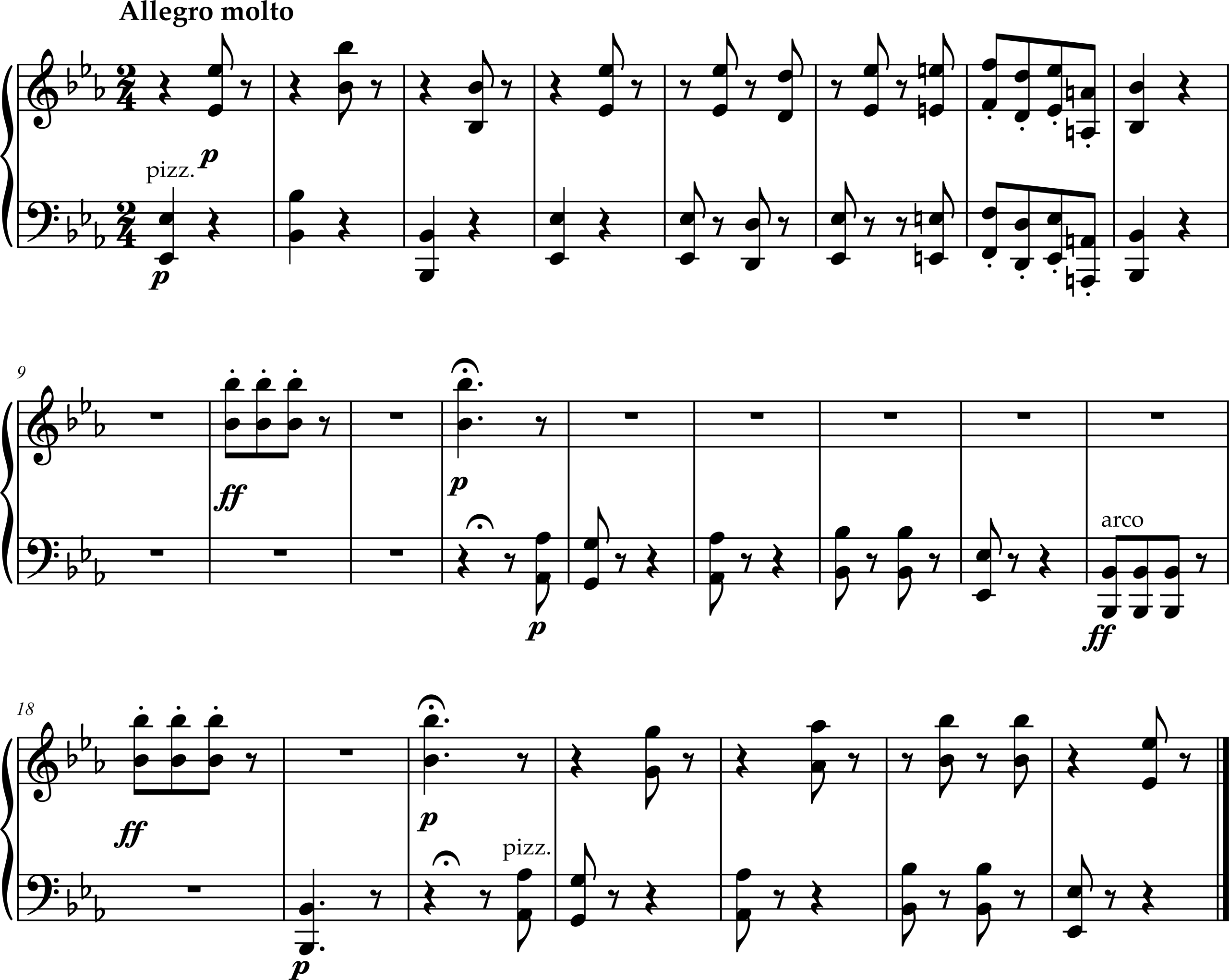A. Simple Duple Meter as 2/4
Basic Exercises in 2/4
In Chapter 1A, we will explore excerpts that use a 2/4 time signature to reflect simple duple meter. In simple-meter time signatures, the top number indicates the number of beats per measure. The bottom number indicates the rhythmic value assigned to the beat. In the case of 2/4, there are two beats per measure, and each beat is one quarter note long. When conducting in two with the right hand, most patterns resemble a backward J from the conductor’s point of view. There are many resources that show basic conducting patterns; simply find the pattern that is clearest and works best for you.
Exercise 1A-1 has near-constant eighth notes, which enforces strong internal beat division—and later subdivision—regardless of rhythmic values at the musical surface. Exercise 1A-2, like all other multi-part exercises in this book, can be practiced and performed in several ways. Students can vocalize each individual line on its own, vocalize one line while tapping or clapping the other, perform with a partner, or even record a multi-track audio file or video.
Exercise 1A-1: Peter Warlock, Capriol Suite, Movement 6, Sword Dance

Exercise 1A-2: Daniel Gottlob Türk, 120 Pieces for Aspiring Keyboardists, Number 8, Wer wollte sich mit Grillen plagen

Exercise 1A-3, along with others in this chapter and subsequent chapters, features multi-measure rests. Strong internal subdivision, perhaps assisted by conducting, will ensure the accuracy of the first entrance after the rest.
Exercise 1A-3: Wolfgang Amadeus Mozart, String Quartet Number 16 in E-flat major, K. 428, Movement 4

Exercise 1A-4: Six Easy Pieces, Op. 52, Number 5, Écossaise

Exercise 1A-5: Daniel Gottlob Türk, 120 Pieces for Aspiring Keyboardists, Number 6, Die Tonleiter

Exercise 1A-6 shows the entire piano texture of the excerpt. The left hand provides a useful rhythmic ostinato against which you can perform the right-hand melody.
Exercise 1A-6: Cornelius Gurlitt, Albumleaves for the Young, Op. 101, Number 5, By the Spring

Exercise 1A-7: Amy Beach, Children’s Carnival, Op. 25, Number 6, Harlequin

Exercise 1A-8: Joseph Haydn, Symphony Number 85 in B-flat major, “La reine,” Hob. I:85, “Le Reine,” Movement 4

Exercise 1A-9: Ludwig van Beethoven, Symphony Number 3 in E-flat major, “Eroica,” Op. 55, Movement 4

Exercise 1A-10: Johannes Brahms, Clarinet Quintet, Op. 115, Movement 4


